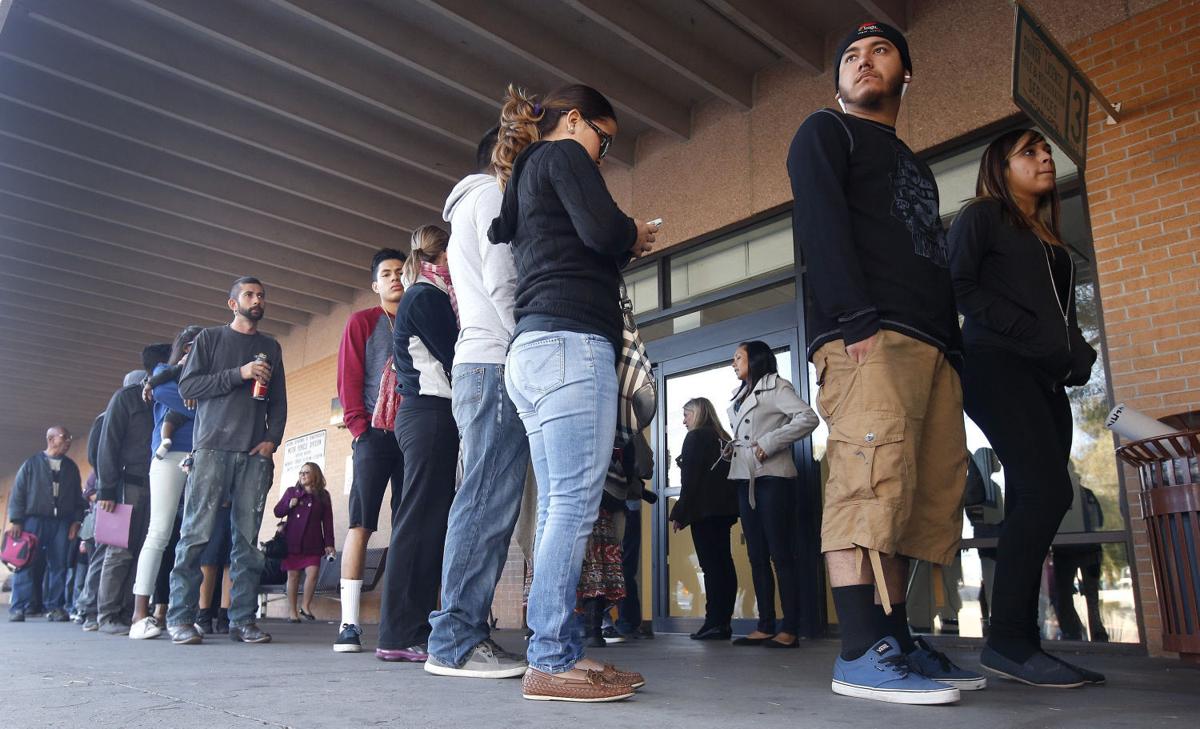Nearly a decade after promising to address the problem, the state’s Motor Vehicle Division continues to struggle to get customers in and out in less than 30 minutes.
A new report by the agency finds that it takes an average of close to 45 minutes for motorists to get what they need at offices in the state’s two metropolitan areas. It’s somewhat better at the less crowded rural offices, with a typical visit taking about 24 minutes.
But what makes the urban figures all that more alarming is the fact that in the prior budget year — the one ending June 30, 2014 — the typical time to complete a transaction was less than 35 minutes. In the interim, responding to an Auditor General’s report, MVD officials had said they were dealing with the issue.
They gave the same response in 2006 when a lawmaker, citing 33-minute wait times, threatened to fine the agency.
So what’s going wrong?
“That’s actually a very good question,” said Mike Cryderman, the agency’s “process improvement and project consultant.”
“That’s one of the reasons I’ve been assigned to take a long, hard look at what’s going on from an MVD office perspective,” he said.
One issue is that there are fewer people working in MVD offices.
For the most recent budget year, the agency listed 604 positions filled. That’s down 44 people from the prior year.
But even with MVD urging more people to do business online or at private agencies, total customer count at MVD offices is down less than 2 percent.
Still Cryderman said there’s probably something more involved than staffing.
“I hesitate to say that’s the lone or even contributing issue,” he said.
Cryderman said he looked at data from individual offices, including fluctuations in number of employees. But he said he could not find a correlation between staff and wait times.
“So that tends to point to other things that we’re still trying to understand, what we may have done differently in our process that has led to this particular thing,” Cryderman said.
He said there is evidence that wait times are getting a bit shorter since the data was prepared for the new report. But Cryderman said that picking up three minutes still does not make up for the extra 10 minutes that was added from one year to the next.
And Cryderman acknowledged something the Auditor General’s Office pointed out earlier this year.
The agency clocks “visit time” from the moment someone gets a ticket with a number until the transaction is done. That doesn’t count situations where people have to queue up just to get the number in the first place.
Still, Cryderman said that, sitting in MVD offices and watching what goes on, he already has found some things that could be done to streamline the process.
One is what’s called “secondary validation.”
“At the very end of the process, we send them to a new window,” he explained.
“The customer has to go to a new place, they have to meet a new person, they have to get validated that they are who they said in the beginning,” he said, a process that adds about another 4 minutes to the whole experience. Cryderman said he’s questioning whether that is necessary.





